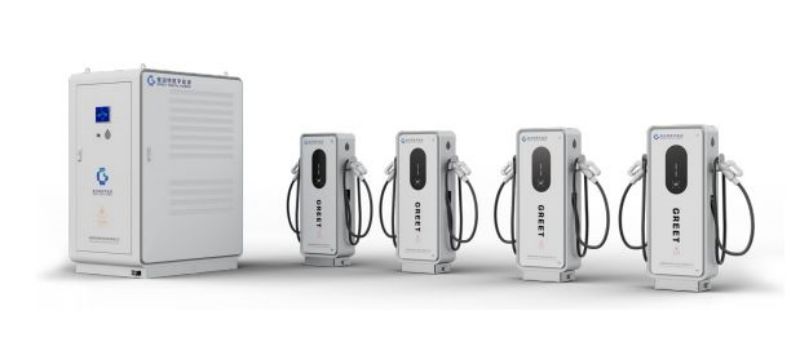Pain points in the marketization of new energy vehicles still exist, and DC fast charging piles can meet the demand for rapid energy replenishment. The popularity of new energy vehicles is restricted by core pain points such as battery life and charging anxiety. In response to the above problems, major manufacturers are continuing to develop battery technology and are responding to market anxiety by installing additional batteries. However, since it is difficult to achieve substantial technological breakthroughs in the performance of power batteries in the short term, it is difficult to achieve a significant increase in the mileage on a single charge quickly. Although installing additional batteries can solve the range anxiety problem of some consumers in the short term, its side effect is an increase in charging time. Charging time is related to battery capacity and charging power. The larger the battery capacity, the higher the cruising range, and the longer the charging time is required without increasing the charging power. Compared with AC piles, DC fast charging piles can charge the battery faster, thereby reducing charging time, improving charging efficiency, and meeting the needs of car owners for quick energy replenishment.
With the trend of DC fast charging stations replacing AC slow charging stations, OBC has become the mainstream among car companies. Currently, there are two ways to charge electric vehicles: one is through the “fast charge” port, which uses a DC pile to directly charge the power battery; the other is through the AC charging port, which is the “slow charge” port, which requires the vehicle After the internal OBC performs transformer and rectification, it is output to charge the electric vehicle. However, as DC fast charging piles gradually replace AC slow charging piles, some car companies are gradually trying to cancel the AC charging port. For example, NIO ET7 has canceled the AC charging port, leaving only one DC charging port and directly abandoning the OBC. Eliminating OBC can reduce vehicle weight and reduce the cost of electric vehicles. The trend of canceling AC charging ports will not only reduce vehicle weight, but also reduce hidden costs such as vehicle testing links, test cycles, and model development investments, which can further reduce the selling price of electric vehicles. In addition, since the maintenance price of OBC is significantly higher than that of external DC charging piles, canceling OBC will virtually reduce consumers’ subsequent car use costs.
There are currently two paths for high-power fast charging technology: high-current fast charging and high-voltage fast charging. In response to problems such as imperfect charging infrastructure and slow charging speed, the mainstream technical solution in the industry is high-power DC fast charging. At present, both vehicles and piles have achieved large-scale, and the power of the available DC fast charging mode is generally 60-120KW. To further shorten the charging time, there are two development directions in the future. One is high-current DC fast charging, and the other is High voltage DC fast charging. The principle is to further increase the charging power by increasing the current or increasing the voltage.
The difficulty of high-current fast charging technology lies in its high heat dissipation requirements. Tesla is a representative company of high-current DC fast charging solutions. Due to the immature high-voltage supply chain in the early stage, Tesla chose to keep the vehicle voltage platform unchanged and use high-current DC to achieve fast charging. Tesla’s V3 supercharger has a maximum output current of nearly 520A and a maximum charging power of 250kW. However, the disadvantage of high-current fast charging technology is that it can only achieve maximum power charging under 10-30% SOC conditions. When charging at 30-90% SOC, compared with Tesla V2 charging pile (maximum output current 330A, maximum power 150kW ), the advantages are not obvious. In addition, high-current technology cannot yet meet the needs of 4C charging. To achieve 4C charging, a high-voltage architecture still needs to be adopted. Since the product generates a lot of heat during high-current charging, due to battery safety considerations, its internal design and technology require extremely high heat dissipation, which will also lead to an inevitable cost increase.
Susie
Sichuan Green Science & Technology Ltd., Co.
0086 19302815938
Post time: Nov-29-2023





